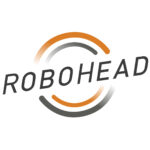
We all recognize the importance of efficiency in the workplace. With the right strategies, we can streamline our processes and maximize our output. But have you ever considered that some common workarounds might be inhibiting your creative team’s potential rather than supporting it? Here are five routines that you might be employing – and why they could be slowing you down.
1. Having a Meeting to Scope a Project
Meetings can be an effective way to share ideas and delegate tasks, but they’re not always the best solution for project scoping. Many teams fall into the trap of spending too much time in meetings, discussing every minor detail of a project. This not only wastes time that could be spent on actual work, but it can also be overwhelming and lead to confusion.
When you rely on the right tool for your project management, you can cut down your scoping time significantly. A comprehensive tool like RoboHead makes it easy to collect the right information from a project request and allows you to save meetings for bigger initiatives and creative brainstorming.
2. Sharing File Versions via Email
While email remains a popular communication tool, it is far from the most effective or efficient way to share file versions or collaborate on a creative project. The process can become chaotic, with different versions circulating and no way to easily track revisions. Plus, it creates a single point of failure where one person misplacing an email or taking time off can derail your entire process.
A project management tool that allows you to share and store files alongside the rest of the project information will not only save you time and confusion, but it will also allow your team to do more high-level work by creating a focused space where you can all focus on doing creative work, not tracking it down.
3. Marking Up PDFs with Feedback
Marking up PDFs can be a quick way to provide feedback, but it often leads to missed or misunderstood notes. The process can be time-consuming, and it doesn’t facilitate direct communication or collaboration.
Consider using a digital proofing tool instead. These tools allow teams to provide real-time feedback, tag team members and even prioritize certain tasks. This ensures that feedback is clearly communicated, understood, and implemented.
4. Trusting Your Gut When Setting Deadlines
Setting deadlines is critical in project management, but trusting your gut to determine these timelines can lead to unrealistic expectations and increased pressure. Instead, use data-driven strategies to set your deadlines.
This could involve analyzing past projects to determine how long tasks usually take or using project management tools that can provide estimated timelines based on the workload. Remember, it’s not about how quickly tasks can be completed, but how well they can be done.
5. Using Spreadsheets for Shared Task Management
While spreadsheets can be useful for organizing data, they’re not ideal for managing shared task lists. They can quickly become cluttered, confusing, and difficult to update in real time.
A better alternative would be task management software. These platforms are designed to organize tasks effectively, delegate responsibility, track progress, and foster collaboration. They can be updated in real time, keeping the entire team on the same page.
To summarize, while these workarounds might seem helpful at first glance, they often lead to inefficiencies that can slow down your creative team. When you rely on disjointed processes, you miss out on opportunities to take on more impactful projects because of wasted time. By implementing more effective tools and strategies, you can improve productivity, foster collaboration, and streamline your creative processes. Remember, in a creative environment, the goal is not just to get work done – it’s to get it done well. And that requires clear communication, effective collaboration, and efficient management.






